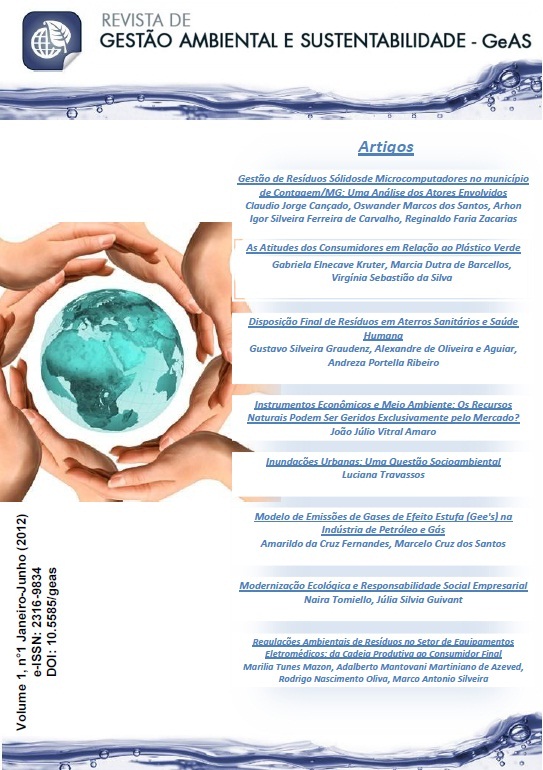Model of Emissions of Greenhouse Gases (Ghg's) in the Oil and Gas Industry
DOI:
https://doi.org/10.5585/geas.v1i1.13Keywords:
Greenhouse Gas (GHG) Exploration and Production (E&P) of oil and Gas, System Dynamics (SD), Global Warming, Tupi PilotAbstract
The warming of Earth's atmosphere is a natural phenomenon and necessary to sustain life on the planet, being caused by the balance between the electromagnetic radiation received by the Earth from the Sun and the infrared radiation emitted by the Earth back into space. Since the mid-eighteenth century, with the advent of the Industrial Revolution and the consequent increase in burning fossil fuels, changes in land use and agriculture, the concentrations of carbon dioxide (CO2), methane (CH4) and nitrous oxide (N2O) has increased significantly. By the year 2010, the concentrations of these three gases showed increments respectively in the order of 39%, 158% and 20% (WMO 2009, 2010 and 2011). Such increases in the concentrations of these gases are changing the Earth's radioactive balance, intensifying the natural greenhouse effect, which over millions of years has been essential to support life on the planet. The main objective of this paper is to present the development of a model based on the language of System Dynamics (SD), of how the emission of Greenhouse Gases (GHGs) is in complex installations Exploration and Production (E & P) of oil and gas. To illustrate one of the results of this modeling process a computer simulation was performed involving emissions from production estimate for the Pilot Production System and Drainage Area Tupi - Tupi Pilot (ICF, 2008).










